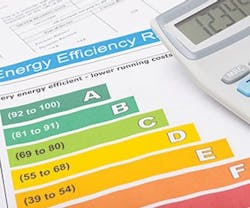How Smart Buildings Save Energy
Commercial buildings could save up to $60 billion if investments in energy efficiency were ramped up by just 1-4%, according to a study by the American Council for an Energy Efficient Economy (ACEEE).
Intelligent efficiency measures applied to just 35% of eligible commercial floor area in buildings with 50,000 or more square feet could save upwards of 50 TWh by 2030, assuming a conservative savings estimate of 20% – more than 1% of U.S. projected energy use by that year. Combined with 17 other common-sense efficiency measures, such as smart manufacturing and voltage reduction, the U.S. could save 22% of its total projected electricity use in 2030.
The commercial building savings estimate relies heavily on smart equipment and appliances that can communicate digitally with operators, each other, and in some cases, the local utility. The research team spotlights four technologies in particular, with the biggest savings resulting from connecting these devices together for whole-building energy optimization.
1) Advanced building energy management systems: The automated fault detection and diagnostics of newer systems help reduce downtime and O&M costs, adding to the energy savings from simply optimizing equipment setpoints and setting timers, the researchers note: “The energy savings due to intelligent efficiency is the difference between a system that is occasionally optimized and one that is always optimized and continuously improving.” Advanced BEMS packages on their own can save anywhere from 13-66% on energy, depending on whether the packages have detection and diagnostics, historical analysis and predictive capabilities.
2) Smart lighting: Pair networked lighting with a building energy management system for a building that can “not only switch lights on and off at optimal times and vary light levels, but also do a comparative analysis of whether the impact on HVAC energy use that results from adjusting smart windows to let in sunlight will be smaller or greater than darkening the windows and turning the lights up,” the authors say.
3) Smart HVAC: The report, New Horizons for Energy Efficiency, recommends tying HVAC into the building energy management system as well to maximize savings. “Advanced control strategies for packaged HVAC systems that customize air conditioning to the needs of the occupants using technologies such as multi-speed fans and demand control ventilation result in cost savings of 24-32% depending on the building type,” the researchers note.
4) Other smart building components: Smart windows that lighten or darken depending on sunlight intensity are recommended, as they can help reduce the HVAC and lighting loads and reduce glare. A study by the Lawrence Berkeley National Laboratory cited in the ACEEE report described savings of 19-26% on cooling and 48-67% on lighting if smart windows are implemented.
Additional savings may be possible by using advanced power strips to reduce plug loads, smart ceiling fans that help regulate the thermostat, destination dispatch controls for elevators, and televisions, refrigerators, and dishwashers that interact with the grid to assist with peak load management. An additional savings of roughly 10% is feasible with controls like these, the researchers note.
To read more, visit aceee.org.
